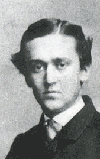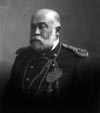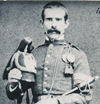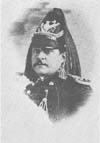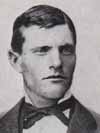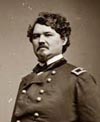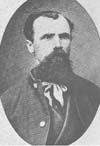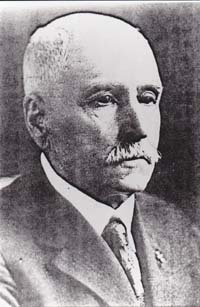Patrick C. White, who was also known Patrick Connelly, was born on March 22, 1844, in Tipperary, Ireland. He was a Sergeant in Company H who was wounded on his left shoulder during the hilltop fight of the Battle of the Little Bighorn.
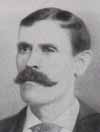
Thomas F. O’Neill (left) died on March 22, 1914, in Riverdale, Maryland, and was buried in Arlington National Cemetery in Arlington, Virginia. He was a Private in Company G who participated in the valley and hilltop fights.
Walter Hoyt died in Middleborough, Kentucky, on March 23, 1903. He was a Private in Company K who was on detached service at the time of the battle.
Samuel Alcott died in Toronto, Ontario, Canada, on March 24, 1926, and was buried in Park Lawn Cemetery there. He was a Sergeant in Company A who was on detached service at the Powder River Depot at the time of the Battle of the Little Bighorn.

Myles Walter Keogh (left) was born on March 25, 1840, in County Carlow, Ireland. He was a Captain in command of Company I when he was killed with Custer’s Column. His horse Comanche became famous as the “Sole Survivor” of Custer’s Column. For more about Keogh and his life in Ireland, see the articles by the late Elisabeth Kimber.
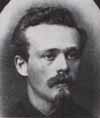
Henry Allen Bailey (right) was born in Foster, Providence County, Rhode Island, on March 25, 1852. He was the blacksmith for Company I and was killed with Custer’s Column. He was buried at Last Stand Hill.
Thomas Murphy died on March 25, 1909, in Washington, D.C., and was buried in the Soldiers’ Home National Cemetery there. He was a Private in Company K who participated in the hilltop fight.
Ferdinand A. Culbertson was born on March 26, 1845, in Pittsburgh, Pennsylvania. He was a Sergeant in Company A who participated in the valley and hilltop fights.
Aaron Lee Woods died in Philadelphia, Pennsylvania, on March 26, 1902, and was buried there in Mount Moriah Cemetery. He was a Private in Company B who was with the pack train and participated in the hilltop fight.
Frederick Holmstead died on March 27, 1880, at Fort Abraham Lincoln, Dakota Territory, and was buried in the Custer National Cemetery in Crow Agency, Montana. He was a Private in Company A who participated in the valley and hilltop fights during which he was wounded.
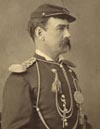
Thomas Henry French (left) died on March 27, 1882, at Planters House, in Fort Leavenworth, Kansas, and was originally buried in the National Cemetery there. He was exhumed on March 4, 1891, and reinterred in Holy Rood Cemetery in Washington, D.C.
Nathan T. Brown was a Private in Company L who was with the pack train and in the hilltop fight. He died in battle against the Nez Perce in 1877 and was originally buried at Fort Assinniboine in Montana. He was reinterred in the Custer National Cemetery on March 27, 1905.
Petter Gannon was a Sergeant in Company B who was not present at the battle due to detached service. He died at Fort Assinniboine in 1886 and was originally buried there. He was reinterred in the Custer National Cemetery on March 27, 1905.
George Anderson married Louisa Kiesel on March 27, 1911, in Minneapolis, Minnesota. He was a Private in Company K who was not present at the battle due to detached service.
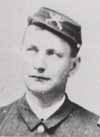
William Carson Williams (left) was born on March 28, 1856, in Wheeling, West Virginia. He was a Private in Company H who was wounded during the hilltop fight.
Harvey Alexander Fox died in Warm Springs, Montana, on March 28, 1913, and was buried next to Scout William Jackson in St. Michael’s Cemetery in Browning, Montana. He was a Private in Company D who was not present at the battle due to detached service.
